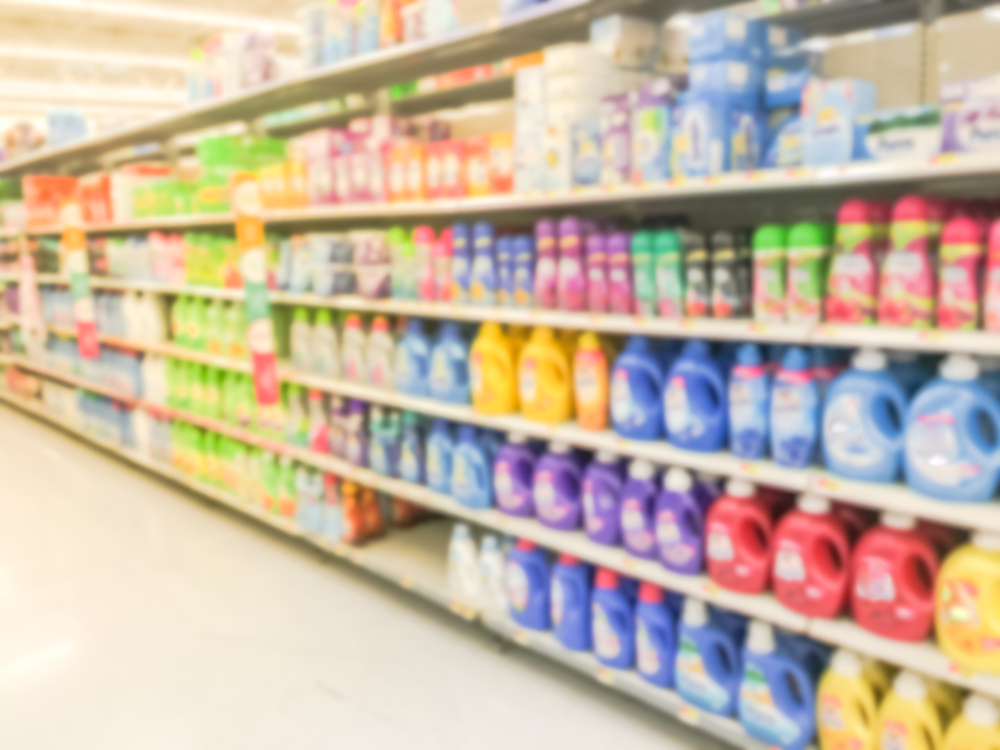It’s no secret that the COVID pandemic and related government mandated shutdowns created winners and losers. Businesses that were deemed essential were generally winners and those deemed non-essential were generally losers as they were shut down to varying degrees. Clearly, restaurants, restaurant suppliers, hotels, airlines, and other travel related companies were impacted the most negatively.
Consumer goods companies that manufacture staples like toilet paper, paper towels, and cleaning products generally did very well throughout the shutdowns. Consumer goods firms include Procter & Gamble, Colgate-Palmolive, Church & Dwight, Kimberly Clark, and Unilever.
By mid 2021 most states in the US and many foreign governments had lifted or loosened most pandemic related shutdowns and restrictions. How are these consumer goods firms faring post-pandemic? Has business slowed back to more normal growth levels? The chart below compares selected business metrics for each firm through the first 3 quarters of calendar 2021 versus their first 3 quarters in pandemic year 2020.
Looking through the chart you’ll notice two commonalities. All five firms grew revenues versus the first three quarters of the pandemic year. A theme you likely hear in the news this year is the rising commodity, energy and shipping costs that have hit almost every business. Each of the four consumer goods firms that reported profit numbers saw gross profit margin declines, to varying degrees, due to inflationary cost pressures.
Going forward, the successful navigation and containment of rising raw materials inputs will be an important differentiator for all firms. Procter & Gamble and its consumer goods brethren are somewhat unique in that it has become very difficult to raise pricing for consumer related goods in the past few decades.
Each of the Consumer Goods firms highlighted here have been impacted in some way by rising cost pressures. Diaper and paper products competitor, Kimberly Clark, has struggled against cost pressures. KMB’s earnings in Q3 2021 were impacted even more than anticipated (here).
Unilever has also been impacted by rising commodity costs, but the company said it expect to offset some of the cost rise with better sales growth in developing markets.
Both Church & Dwight and Colgate-Palmolive have raised prices or are planning to raise prices to combat higher input costs.
P&G has announced price increases set to take effect in September 2021 and CEO Jon Moeller comes from a finance background which should serve the company well. In a post earnings investor call, Moeller said ‘this is the time to step forward, not back’, and re-iterated the firms plan to maintain their marketing spend in hopes of capturing additional market share.
Selected earnings metrics for Procter & Gamble and some of its competitors.
| 9 Months Ended | PG* | CL | CHD | KMB | UL |
| Sales 2021 | 57,393* | 13,018 | 3,821 | 14,475 | 39,270 |
| Sales 2020 | 54,230* | 12,147 | 3,600 | 14,304 | 38,622 |
| % Change | 5.8* | 7.2% | 6.1% | 1.2% | 1.7% |
| Gross Profit 2021 | 28,315* | 7,816 | 1,682 | 4,552 | n/a |
| Gross Profit 2020 | 27,430* | 7,374 | 1,656 | 5,158 | n/a |
| % Change | 3.2%* | 6.0% | 1.6% | (11.7%) | n/a |
| Gross Profit as % Sales 2021 | 49.3%* | 60.0% | 44.0% | 31.5% | n/a |
| Gross Profit as % Sales 2020 | 50.6%* | 60.7% | 46.0% | 36.1% | n/a |
| % Change | (1.1%)* | (0.7%) | (2.0%) | (4.6%) | n/a |
| SG&A 2021 | 15,967* | 4,809 | 403 | 2,488 | n/a |
| SG&A 2020 | 15,215* | 4,386 | 428 | 2,636 | n/a |
| % Change | 4.9%* | 9.6% | (5.8%) | (5.6%) | n/a |
| Diluted EPS 2021 | $4.00* | $2.38 | $2.68 | $4.31 | n/a |
| Diluted EPS 2020 | $3.82* | $2.38 | $2.52 | $5.30 | n/a |
| % Change | 4.7%* | 0.0% | 6.3% | (18.7%) | n/a |
| Organic Sales Growth 2021 | 5.3%** | 5.0% | 4.3% | (2.0%) | 4.4% |
| Shareholders’ Equity $ | 46,408 | 591 | 3,513 | 707 | n/a |
| NOTES: Data is from each company’s latest 10-Q report through 12/01/2021 (each is hyperlinked in company symbol). Figures are displayed in Millions $, except EPS, and unless noted otherwise by % sign. Unilever is not standardized to US reporting conventions. Figures inside parenthesis indicate a negative number.
*PG nine months figures through their Q1 2021 report are derived. P&G’s fiscal year-end is 6/30 so comparable 9 months figures are derived by combining Q1 2021 + Q4 2020 + Q3 2020 data. **PG’s organic sales growth 9 months through Q1 2021 is estimated using data in the ‘Net Sales Drivers’ chart from each of the aforementioned quarters. Shareholders equity is from Q1 2021. |
|||||
Disclaimer
This material is provided by Schmitt Wealth Advisers for informational purposes only. It is not intended to serve as a substitute for personalized investment advice or as a recommendation or solicitation of any particular security, strategy, or investment product. Schmitt Wealth Advisers does not provide tax or legal advice, and nothing herein should be construed as such. Opinions expressed by Schmitt Wealth Advisers are based on economic or market conditions at the time this material was written. Economies and markets fluctuate. Actual economic or market events may turn out differently than anticipated. Facts presented have been obtained from publicly available sources (unless otherwise noted) and are believed to be reliable. Schmitt Wealth Advisers, however, cannot guarantee the accuracy or completeness of such information. Past performance may not be indicative of future results.

